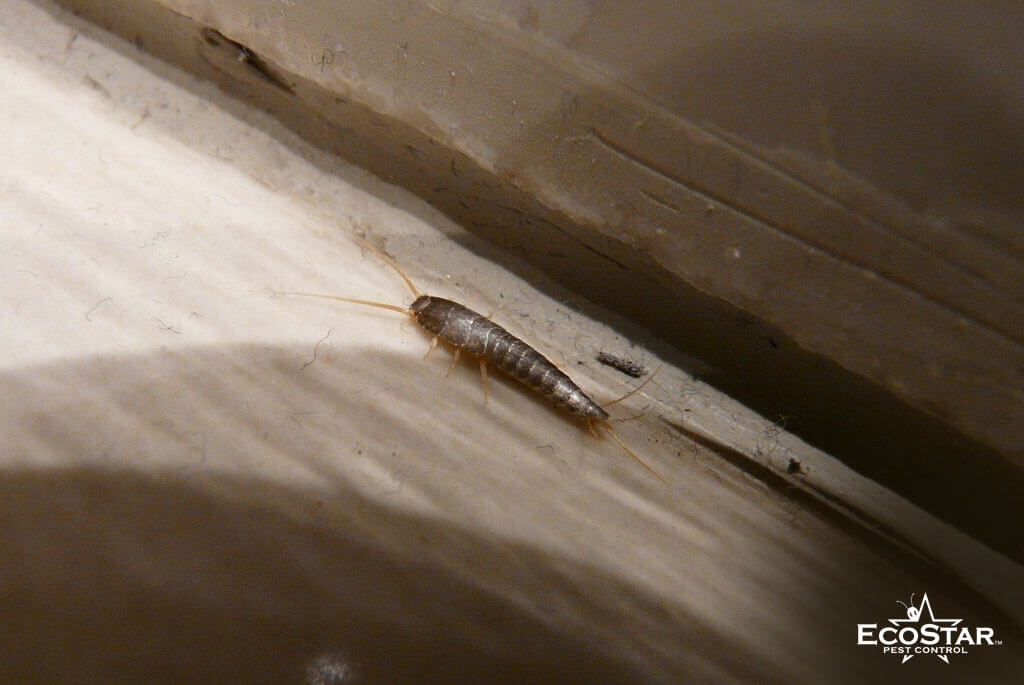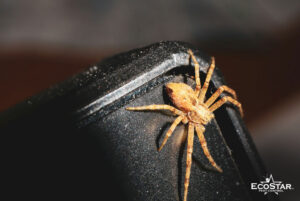Table of Contents
You went down to the basement to grab something, and now you’re wondering why it feels like a bug zoo down there. We see this all the time.
Basements are the perfect hangout spot for all kinds of pests. It’s dark. It’s damp. Most folks don’t clean the basement nearly as often as the rest of the house. That makes it easy for bugs to settle in without anyone noticing until they crawl out and surprise you.
If that sounds like your situation, don’t worry. You’re not alone and it’s fixable. I’ll walk you through six steps we use every day to kick basement bugs out and keep them out.
Common Basement Bugs You’ll Probably See
Before we get into the steps, let’s talk about who’s crashing your basement.
Silverfish: You’ve probably seen these little silver bugs darting around like they’re in a hurry. They hang out in damp areas and love to chew on things like cardboard, books, and even your clothes.
Centipedes: The ones with all the legs. Creepy, fast, and usually feeding on other bugs hiding down there.
Spiders: Most aren’t dangerous, but if you’ve got webs popping up everywhere, you’ve probably got other bugs they’re feeding on.
Cockroaches: These insects don’t travel alone. If you see one, there’s likely more.
Pill Bugs (Roly-polies): Not harmful, but a sign that your basement is damp. They only show up where there’s moisture.
Ants: Some build nests in the walls or floors. Others are just scouting for food. Either way, you don’t want them.
Further Reading: 8 Summer Pest Control Tips for Dallas Homeowners
Have you seen any of these? You’re definitely in the right place.
Step 1 – Dry It Out
The number one reason bugs show up in basements? Moisture.
If it’s humid or there’s water leaking anywhere, bugs will move in fast.
Here’s what to do:
- Use a dehumidifier. Run it regularly.
- Fix any leaks. Check under sinks, around the water heater, and near your foundation walls.
- Wrap those cold pipes so they don’t sweat.
No moisture = no bugs.
Step 2 – Seal the Gaps
Bugs don’t need much to get inside. Even the smallest crack is like an open door to them. So let’s go find those entry points and seal them up.
Check around:
- Foundation cracks
- Basement windows
- Vents
- Doors
Use caulk or sealant to close up anything you find. Install door sweeps if there’s a gap under the basement door. And if your dryer vent doesn’t have a screen, add one. You’d be surprised what can crawl in that way.
Step 3 – Clear the Clutter
If your basement’s packed with boxes and old stuff, don’t be surprised if bugs have moved in too. All that clutter gives them the perfect place to hide and breed.
- Start by getting rid of anything you’re not using old boxes, clothes, random junk. If it’s just sitting there collecting dust, bugs are probably already in it.
- Swap out those cardboard boxes for plastic storage bins with tight lids. Bugs chew through cardboard like it’s nothing.
- And try to keep your stuff a few inches off the floor and away from the walls. That makes it harder for bugs to hide and easier for you to spot problems early.
The more stuff you’ve got piled up down there, the more hiding spots bugs have. And trust me, they’ll take full advantage of it.
Step 4 – Clean It Up
Just because nobody’s hanging out in the basement doesn’t mean you should not clean it. Bugs don’t care if it’s finished or not, if it’s dusty, cluttered, and full of cobwebs, they’re in.
Start simple:
- Run a vacuum through the corners, behind furniture, and along the baseboards.
- Knock down any cobwebs, spiders love to set up shop in the same spots.
- Wipe down windowsills, vents, and shelves. Dust and debris attract pests, plain and simple.
Step 5 – Use a Few Simple Tools
If you want to keep things under control between visits, there are a couple of easy things you can try.
- Sticky traps work great for catching spiders, silverfish, and even ants. Place them in corners or near walls, spots where bugs like to sneak around.
- Diatomaceous earth is another good option. It’s a natural powder that’s safe for people and pets but deadly to bugs. Just sprinkle a thin line along baseboards or in cracks.
- And if you’re into natural stuff, peppermint oil can help. A few drops along the walls or windowsills might keep certain bugs from settling in, they can’t stand the smell.
These won’t solve a serious infestation, but they’re a good way to stay ahead of the game.
Useful Resource: 8 Fire Ant Control Tips Every DFW Homeowner Should Know This Summer
Step 6 – Call EcoStar Pest Control
If you’ve done all the above and you’re still seeing bugs? It’s time to call us.
We treat basements all over DFW, and trust me, we’ve seen worse. Our team at EcoStar Pest Control knows how to handle Texas pests. We’ll come check it out, show you what’s going on, and take care of it the right way.
We don’t just spray and leave, we figure out what’s drawing the bugs in, treat it the right way, and help you keep them out for good.
FAQs
Q:What’s causing the bugs in my basement in the first place?
Usually moisture, cracks in the foundation, or too much clutter. It creates the perfect bug hideout.
Q: Are these bugs dangerous?
Most aren’t, but cockroaches can carry bacteria, and some spiders can bite. Either way, you don’t want them in your home.
Q: Can they get into the rest of my house?
Absolutely. The basement is just the start. If you wait too long, they’ll start exploring upstairs too.
Q: How often should I get my basement treated?
If you’ve had bug problems before, a quarterly service is smart. Otherwise, we can assess and suggest what fits your home.
Q: Do I have to move all my stuff for you to treat it?
Nope. We’ll work around it. If anything needs moving, we’ll let you know ahead of time.
Related Pest Control Services in DFW:
Basement bugs are just one of the many pests that Texas homeowners deal with. At EcoStar Pest Control, we also specialize in:



